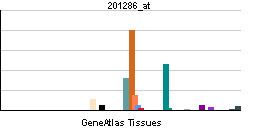Entrez 6382 | Ensembl ENSG00000115884 | |
 | ||
External IDs OMIM: 186355 MGI: 1349162 HomoloGene: 2252 GeneCards: SDC1 | ||
Function
The protein encoded by this gene is a transmembrane (type I) heparan sulfate proteoglycan and is a member of the syndecan proteoglycan family. The syndecans mediate cell binding, cell signaling, and cytoskeletal organization and syndecan receptors are required for internalization of the HIV-1 tat protein. The syndecan-1 protein functions as an integral membrane protein and participates in cell proliferation, cell migration and cell-matrix interactions via its receptor for extracellular matrix proteins. Syndecan-1 is a sponge for growth factors, with binding largely via heparan sulfate chains.
An exception is the prosecretory mitogen lacritin that binds syndecan-1 only after heparanase modification. Binding utilizes an enzyme-regulated 'off-on' switch in which active epithelial heparanase (HPSE) cleaves off heparan sulfate to expose a binding site in the N-terminal region of syndecan-1's core protein. Three SDC1 elements are required. (1) The heparanase-exposed hydrophobic sequence GAGAL that promotes the alpha helicity of lacritin's C-terminal amphipathic alpha helix form and likely binds to the hydrophobic face. (2) Heparanase-cleaved heparan sulfate that is 3-O sulfated. This likely interacts with the cationic face of lacritin's C-terminal amphipathic alpha helix. (3) An N-terminal chondroitin sulfate chain that also likely binds to the cationic face. Point mutagenesis of lacritin has narrowed the ligation site.
While several transcript variants may exist for this gene, the full-length natures of only two have been described to date. These two represent the major variants of this gene and encode the same protein.
Clinical significance
Altered syndecan-1 expression has been detected in several different tumor types.
It is a specific antigen on multiple myeloma cells.
Indatuximab ravtansine targets this protein.
Application
It is a useful marker for plasma cells, but only if the cells tested are already known to be derived from blood.
